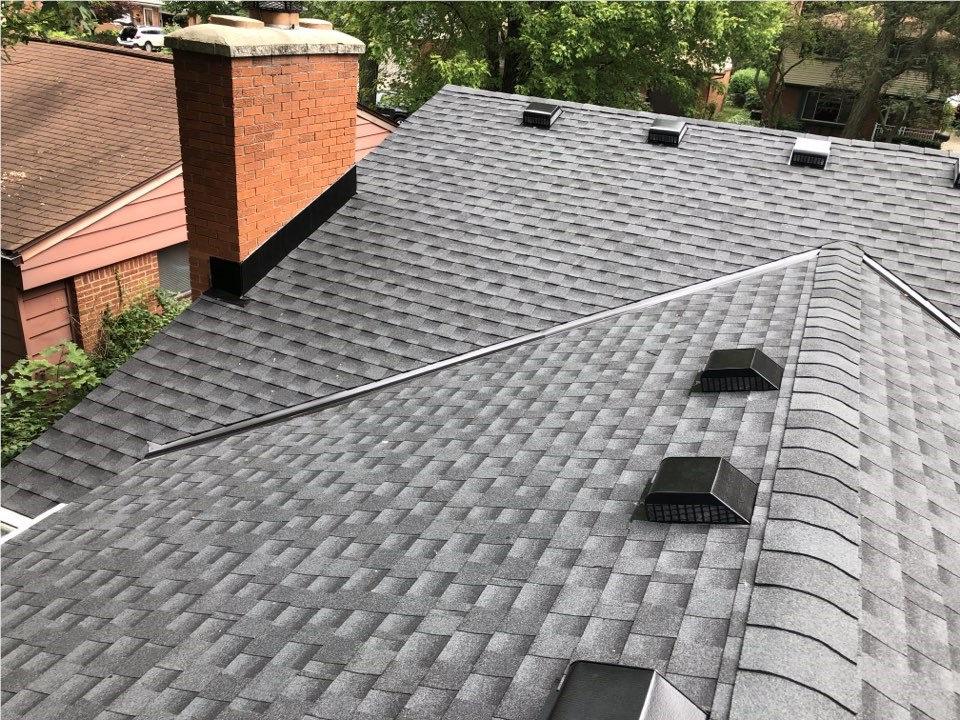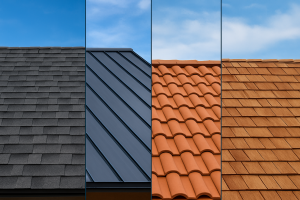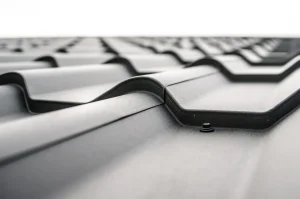Each year, homeowners in Hemet, the Inland Empire, and across Southern California learn that roof problems often go beyond missing shingles or storm damage. One of the most commonly overlooked—yet essential—issues uncovered during a roof inspection is poor ventilation. During a roof repair of the most overlooked—but critical—problems is poor roof ventilation. With over 40 years of roofing experience under our belt, Weathertight Roofing, Inc. has seen firsthand how inadequate ventilation not only leads to leaks, mold, and premature aging but also voids manufacturer warranties and increases energy costs.
Here, we share the most common—and sometimes subtle—signs of poor ventilation that you shouldn’t ignore.
1. Curling or Peeling Shingles
If you notice asphalt shingles that are curling, lifting, or peeling at the edges, this could be a clear signal of inadequate attic airflow. When warm air rises and becomes trapped, it softens the shingle adhesive from the underside. Over time, shingles lose their ability to stay flat, leaving raw areas exposed to sun and rain. These damaged shingles are not only vulnerable to leaks—but they also look unsightly. Tip: Regular maintenance and inspection—checking for loose or broken shingles twice a year as part of our Roofing Maintenance Program—can catch and fix this issue early.
2. Ice Damming in Winter (or Heat-Buildup in Summer)
While snow isn’t common here, regions with colder winters still see ice damming—a build-up of frozen water along eaves which blocks runoff. This happens when warm attic air melts snow, which then refreezes at cooler edges. In Southern California, the comparable menace is heat accumulation in your attic, causing HVAC systems to work overtime and utility bills to spike.
A well-ventilated attic keeps temperatures within 10°F of the outside temperature—reducing both ice dams and heat build-up.
3. Rising Energy Costs
Noticeable spikes in cooling bills during summer? This is a telltale sign your attic isn’t ventilating properly. Trapped heat forces your air conditioner to work harder, driving up energy bills and stressing HVAC equipment. We always recommend ventilation inspections alongside attic insulation checks—during our maintenance visits—to keep your energy costs down and your roof working efficiently. True attic airflow means letting cool air in and exhausting warm air through ridge or roof vents. Our teams install and inspect continuous soffit vents that blend seamlessly into rooflines—combining durability and aesthetics.
4. Mildew & Musty Odors
One of the most dangerous consequences of poor ventilation is moisture accumulation. From daily routine like cooking and showers, homes produce moisture that travels into the attic. Without proper vents, this moisture can condense on cold surfaces—causing mold, mildew, rot, and structural damage.
Signs like musty odors in your attic or upper rooms and visible mold/mildew patches—particularly around eaves and rafters—should be addressed immediately before they spread to wiring, insulation, or living spaces.
5. Leaks in Attic or Ceiling
Visible water stains on your attic sheathing or ceiling indicate that moisture has managed to penetrate the roof. While leaks are often attributed to damaged shingles or flashing, poor ventilation is frequently an overlooked culprit. When warm, moist air meets cold surfaces, condensation forms—and eventually drips, causing stains or even structural weakening.
6. Sagging Roof Lines or Structural Stress
Behind the scenes, heat, moisture, and mold can lead to more serious structural issues. A consistently damp attic can weaken roof decking, rafters, and even the underlying home structure. In extreme cases, sagging rafters or uneven rooflines become visible. That’s why we include structural checks—even look for uplifted nails and flashing failure—as part of our Roof Maintenance Program.
Why Proper Ventilation Should Matter to You
🔧 Preserves Your Roof’s Lifespan
Our research shows that roofs with balanced attic ventilation last up to 30% longer. Protecting your home’s investment starts with ventilation.
🏡 Maintains Comfort & Indoor Air Quality
Ventilation isn’t just about temperature—it’s about healthy air. A poorly ventilated attic can worsen your home’s indoor air quality, leading to musty smells and even indoor mold, which affects comfort and well-being.
💰 Saves On Energy & Repairs
Rising HVAC bills, shingle replacements, mold remediation, and structural repairs—these add up fast. Catching ventilation issues early is more affordable than major repairs. With diagnostic tools like infrared, we pinpoint trouble spots early in our maintenance visits.
✔️ Keeps Manufacturer Warranties Intact
Many roof manufacturers require proof of attic ventilation for warranty coverage. Without proper airflow, warranty claims can be denied—leaving you financially responsible for failures that ventilation could have prevented.
What Proper Roof Ventilation Looks Like
Intake & Exhaust Balance
True attic airflow means letting cool air in and exhausting warm air through ridge or roof vents. Our teams install and inspect continuous intake vents that blend seamlessly into rooflines—combining durability and aesthetics.
Manufacturer-Certified Installation
We’re trained in roofing systems from Owens Corning™, CertainTeed™, Carlisle, and others. Weathertight Roofing and our team handles all installations in-house—never subcontracted—ensuring top-tier workmanship and full compliance with manufacturer specifications.
Regular Maintenance & Infrared Diagnostics
Our Maintenance Program includes biennial inspections—every other year—to check for loose shingles, flashing, exposed nails, and vent integrity from intake to ridge. We also use infrared technology to detect hidden heat or moisture issues before they become costly problems.
What You Should Do Now
- Schedule a Ventilation Inspection – Weathertight Roofing’s inspectors will evaluate your attic, vents, insulation, and roofline, preparing a detailed report and recommendations.
- Balance Intake & Exhaust – Upgrades may include adding and installing ridge vents—each option tailored to your roof type and layout.
- Perform Preventative Maintenance – Twice yearly (especially spring and fall), schedule check-ups to catch issues before they escalate.
- Consider a Roof Replacement – If your roof is 20+ years old or showing multiple signs of ventilation failure (curling shingles, sagging structure, leaks), a replacement is often warranted—with a fresh ventilation system included.
- Use Our Infrared Scan & Maintenance Program – This high-tech approach surfaces issues early, providing maximum protection and value.
Why Hemet & Canyon Lake Trust Us
- 40+ Years of Experience: Since 1983, we’ve provided roofing solutions built for longevity and resilience.
- Certified Installers & Manufacturer Warranties: We stand behind our work with full warranty coverage, giving you peace of mind.
- Non‑Subcontracted Work: Our own crews handle everything, giving you consistency, accountability, and cost-effectiveness.
- Advanced Diagnostics: Infrared scans help us find leaks or hot spots before they lead to costly damage.
- Maintenance First: Our Maintenance Program is designed to save you thousands by catching small issues early.
Final Takeaway
Don’t wait for visible problems or rising bills—roof ventilation issues start quietly and escalate quickly:
- Check your shingles for curling or peeling edges
- Watch your energy bills during hot seasons
- Inspect your attic for musty smells, mold, or visible moisture
- Look up for sagging rooflines, lifting nails, or cracked flashing
If you notice any of these signs, schedule a professional inspection immediately.
Reach Out to Weathertight Roofing, Inc.📞
Protect your home, your comfort, and your investment with proper roof ventilation expertise. Call us today at 951‑929‑0557 for a comprehensive inspection, maintenance plan, or replacement estimate. Serving Hemet, Canyon Lake, San Jacinto—and all within a 35‑mile radius—with reliability, transparency, and craftsmanship you can trust.







